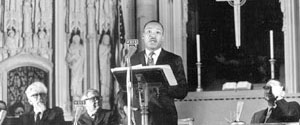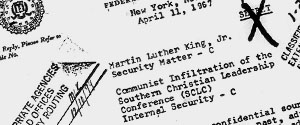This is a long entry - about capturing some thoughts on leadership.
***
I have spent the last several days with John King, Greg Hartmann and Mark Doherty and Dennis Williams - and, as importantly, we have spent our time together with a roomful of exceptional leaders, young people, from across the state of Oklahoma. (John, Greg and Mark are part of the Cultural Architecture Team.)
There are many thoughts that I would like to capture - I have 55 pages of single paged notes I've taken in the past few days - including links to multiple articles and resources!
John King's dad was geologist - and John was himself a professional dancer earlier in life. John seems to have connected multiplied issues from his life's story as he dances around groups using his ability to discover the hidden "gems" and unique "stone" foundations imbedded in each learner, listener, and leader - or perhaps the learner is the listener is the leader. We are all Learnisteneaders!
As I have been with the group, I have reflected on efforts I have given toward trying to develop leadership, and to develop leaders, in my own life. I thought back to the S.O.L.I.D. Team (Seeking Out Leaders In Discipleship) in the early 1990s as part of my work as a pastor. I listened to John Maxwell's 100 Lessons On Leadership numerous times over the years - especially when I used to commute from Colorado Springs to Denver, Colorado. I have read multiple books on leadership over many years and I earned a Professional Certificate in Leadership Education from DUKE. I’ve tried to develop leadership in D.C. and politics – and in international venues as a Peace Fellow.
Additionally, as I work to lead others in care-giving kinds of ways, I worked to earn a Master of Arts Degree in Marriage and Family Therapy - and I worked to establish unique forms of caring for unique kinds of leaders through Confidential Care and Consultation - helping people find meaning in life, so that life can be worth living! I worked with others to found and establish the Eupan Global Initiative, that works to extend the good for the all in collaborative, team-building, generative ways! Peace-building and peace-making - central to my core values - and I believe central to the purpose of good living for all life - are connected to being connected in shared ways!
The Cultural Architecture leaders have shared many things and one of the things I have come away with is a new discernment of the idea that leadership doesn't happen "from" a person, but between people. And, from the information gleaned by John King (with Dave Logan and Halee Fischer-Wright), I was reintroduced to the stages of tribal leadership. (I read the book a couple of years ago, but have a different sense of it now, after spending days engaging the ideas in context with others.) There are numerous frameworks where you can read summaries of Tribal Leadership - so I will let you read here and here as just a couple of examples if you would like more information.
The notion that leadership happens between people is interesting to me - and it seemed wrong, to be frank, when I first heard it. The notion that leadership doesn't come from "a leader" seemed to me, at first, just plain wrong, if I'm honest. I am certain that that comes from the fact that we are used to looking to "the leader" in the group that we don't stop to think about how leadership emerges from within groups as the whole group partners together. Any group will naturally have persons with different roles, but all play roles in leading in unique kinds of ways. And, any "leadership" from a top down perspective only has leadership ability to the extent that it is given - or permitted - as shared members allow the role of others to exert influence one-upon-each-other.
As I heard the notion of leadership happening between people, too, I had bias to resist the notion because of my reading of Martin Buber's I-Thou - and, in fact the way that I teach Buber's I-Thou in Master's Classes for a counseling program. Without detailing the nuance of Buber here, Buber understands that something happens "between (Das Zwieschen in Buber's German) people. For Buber, life's framework of most significant transcendental reality - the mysterium tremendum and Summa summarum of existential meaning - happens in an encounter where two I's stand in full-open-genuine-unfettered mutuality with one another. When that happens, Buber posits that in "the between" a reality of encounter comes to awareness that becomes more than two "I's standing looking at each other as "you's" and a transcendent "You" is now present. For Buber, "All real living is meeting." Or, in an alternate translation, "All real life is encounter." Understood in this way, my bias was to see "the between" among persons as not the place where "leadership" happens - but the place of ultimate existential encounter - not merely "leadership" however or whatever that means.
And still . . . I kept listening.
And as I listened, I pondered the following thoughts.
When I teach Buber's existential philosophy, I often (always, really) use the idea of two pillars and an arch - as an imperfect but helpful and analogy for explaining Buber's concept. To make it utterly simplistic here. Two pillars stand separate one from another and have weight, size, shape, unto themselves. But, you can't do much with a pillar unto itself. It stands alone and has little value. But - when you begin to connect pillars, now you can begin to construct things upon the pillars standing one - with another. And, even more (and I won't get into all the physics and architectural genius here) - while you can take two pillars and join them by a slab of stone or pieces of lumber - in a post-and-lintel form of construction - an arch that connects two pillars is wonderfully more than a lintel. In fact, I posit “the” arch is the heart of “architecture” – it is “arch” “tecton” – to be a cultural architect is to be about the task of constructing arch’s – points of collaborative connection.
An arch does several things in connecting beams but it does so with a sleek elegance and mastery in that (1) an arch is stronger than a beam (2) and because it is stronger it can be the basis of much larger constructions efforts and (3) the arch is simply more elegant, aesthetic and beautiful. Further, the arch works with a wonderful conceptual (even physical beauty). The arch works to connect two pillars when the force of gravity pulls equally on all stones within the arch - and when the keystone in the middle of the arches is perfectly (truly) true to the pillars. Two pillars - standing at equal height with equal balance, mass, and size, can have an arch built between them - and - precisely in the middle - in the between - of an arch a "keystone" holds the two pillars together - creating a space between them that makes the sum of the parts much stronger, taller, and more beautiful than the sum-of the parts taken individually. So much so, in fact, that the Romans (who mastered the architectural reality) were able to build arches upon arches upon arches within buildings - creating one of the greatest feats of civil engineering - alongside the feat of their cultural, political and social engineering in the empire - by creating the Coliseum (or Colosseum). A review of the coliseum in pictures (it's even better to see it in person) will demonstrate that the coliseum is nothing less than a feat of "colossal" engineering, based on the harmonious, balanced, strength of hundreds of arches - partnered together - such that, together - they create the space that allows the Coliseum to become the feat that it was - and is!
Now - when I teach about Buber's ontology, I normally note that the very nature of the analogy I use (which is quite descriptive!) does not make perfect sense of the existential reality Buber is trying to capture. Yet, I point out that for the arch to work - it cannot be one pillar standing taller or stronger or over the other pillar. And, the arch cannot be off-centered between the pillars. And, the force of gravity that pulls on each and every stone in the arch must be the same - so that - "in the between" of the pillars - gravity pulls on the keystone, locking it in place - so that the two pillars - standing in a kind of reciprocal-relationship create the space for the "between" to exist in their midst. The between in their midst, in the language of Buber understands how the space of the between is now the space where "what happens" is not because of the push-or-pull of either pillar - but it is the "force" that exists in the nothingness between them, but not created apart from them.
As I have been with fellow learnisteneaders the past few days - several interesting things have happened within us (individually and communally) that have made the space of the class-learning-environment into something like sacred space. We've learned something about listening each other into leadership - and in the midst of it - a "force" greater than the sum of our parts stands in our midst as a felt Presence.
**
Another reflection from my time with the fellow learnisteneaders is the notion that leadership happens as we "stand on the shoulders of giants" That is, what we do as we move forward into the future we are able to do on the basis of discerning it, seeing it, "knowing it" through others. As but one example, MLK Jr. was inspired by the person of Ghandi and MLK "stood on the shoulders" of Ghandi's non-violent peace-movement for social change, even as he adapted it and changed it for unique situations in America that were different from the specifics of India. But, even as MLK stood on the shoulders of others - so too, he was able to do what he did as he stood on the shoulders of hundreds of thousands of persons who enabled the Civil Rights Movement to have significance. And, in a reciprocal way, one could say that others within the movement "stood on the shoulders" of MLK as they were empowered by, among many things, the power of his rhetoric and his dream. His dream was their dream and their dream was his dream - each standing on the shoulders of each other in a certain symbiotic synecdoche of reciprocity.
And, to add to this notion - to the image - of the castellers of Catalan who build amazing towers of human bodies - constructed, quite literally, on one anothers shoulders!!! - in a feat that matches strength with size with agility with stamina with courage - all to construct something together!
What if leadership is a combination of the insights – that leadership happens between us – and, in the space of the between, life’s moments of greatest significance happen? What if leadership, best reflected, is the best of ourselves combined with the best of that which is eternal and real – creating spaces and places for eupan to manifest.
**
Another reflection.
Do a search on the internet for Colossal and you will find more notes on something being a colossal failure, than a colossal success!
**
These extended reflections on "the between" and "the arch," "castellers" and colossal failures have caused me to wonder.
As I wonder, I posit whether the model of Tribal Leadership should be extended in generative ways. The language itself sounds, well, "tribal" - localized and small. There is nothing wrong with the ideas of Tribal Leadership! The ideas are expansive! The notions (and empirical data) that suggest how tribes work and how triads function is important! And yet - the language is "tribal."
In the book, Tribal Leadership - and in re-tellings of it - the images used for Tribal Leadership operating at Stage 4 and Stage 5 - the highest stages - includes a hexagonal image - which is good, but which remains two-dimensional - even if described as triadic.
What would happen if we took the generative ideas and merged them in new and synchronous ways to build something colossal, together?
The Romans - through feats of synchronous and generative political, social and personal reform - crafted an Empire that shaped the world.
What if we took the idea of the Triad and discerned it in "colossal" ways - where we discerned ourselves as leaders connected in triads - not just laterally (as a 2 dimension image on the page) but laterally and vertically - so that we could "see" in a new image (but with the same foundational ideas) what "we're great" stage four leadership builds. "We're great" stage four leadership and Stage Five "Life's great" leadership creates more than just "hexagonal" objects on the page - but, in a certain kind of way, constructs social-collaborative-open space within and between and over-and-above each relationship such that - what is created is - like the coliseum - colossal!
What is created embraces the "between-ness" of leadership - understood to stand in triadic-ways - but extended, too. The pillar is connected to the other pillar - through the arch - the triad - but the pairing of pillar to pillar happens only with the arch - but happens in the space between them all. And, when these relational structures (or learnisteneaders) come into generative-equal-stabilizing space one with another - and connected to yet another triadic- pillar-arch-pillar - then the architecture gets going!
The colossal feat that was (and is!) the coliseum emerges from the generative space of the beauty, elegance, strength, and power of the "space" that is created by the arches of the coliseum. And together, each and all of the arches and pillars - one with another - they created and framed not just a colossal piece of architecture - but a colossal piece of architecture that became (and remains) a metynomic structure that existed as the symbol of the empires strength, beauty, size, and majesty. The Coliseum was the Empire, the Empire was the Coliseum. And, it stood - it worked - it functioned - in collaborative space. The Empire only worked - as people worked with one another in generative space. (And when that generative space fell apart, so did the empire!) And the coliseum worked (and continues to work) because of the generative reciprocal space that pillars create-standing harmoniously and in balance with the keystone that spans the gap, combines their influence and creates the space of the between - to be constructed over and alongside one another until - the Coliseum stands.
The colossal feat that is the coliseum functions in the beautiful, powerful, "force" of generative space - and it becomes more than a stone structure, and is magisterial and dominating.
Stage four and stage five leadership - are more than simple triads - they are beautiful arches of power which, when aligned, can combine to construct the greatest structures, which serve as the apex of and symbol of perhaps the greatest empire of old.
Do you want to build something colossal?
Not a colossal failure - but a colossal success!
Do you want to work with others in collaborative and generative space that results in a reality greater than the sum of the parts?
Do you want to find existential meaning and value with others that is more than the person?
Do you want to stand on the shoulders of giants - and serve as the foundation upon which others will stand to build on your shoulders?
What if colossal leadership can only transpire between us – with Utter Significance – in shared reciprocity as we build something as beautiful, strong, large and great as the Coliseum.
This could be enable colossal leadership to emerge from a colossal culture to build a colossal piece of architecture as part of a colossal empire, with colossal success.


















